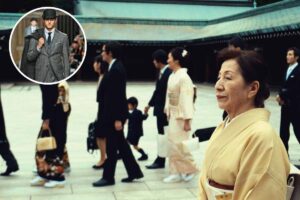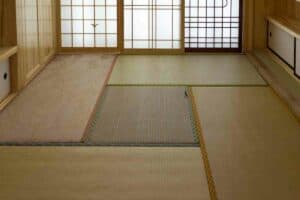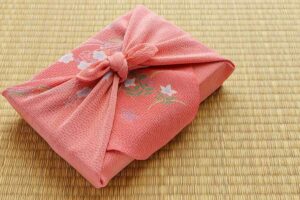Yes, while some are moving towards traditional Western-style mattresses and bed frames, approximately 40% of the population still uses a futon.
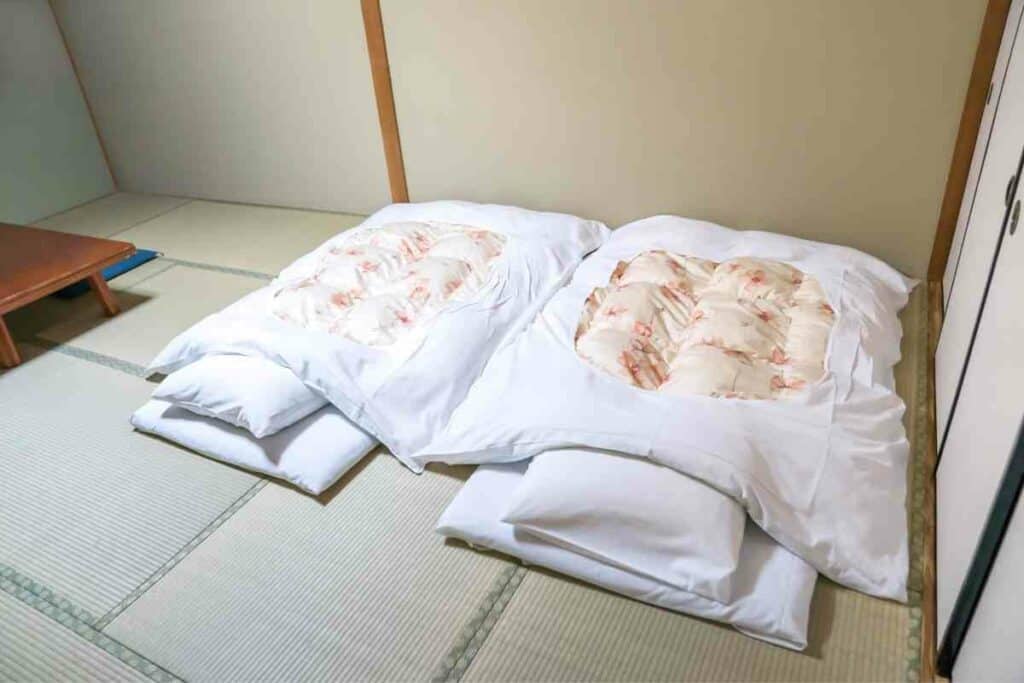
Futons are the traditional way of sleeping, and many people haven’t wanted or needed to change their ways.
The futons have many health advantages and they free up valuable space in rooms.
Table of Contents
What Is a Futon?
While similar, a Japanese futon is not the same thing that you had in your college living room.
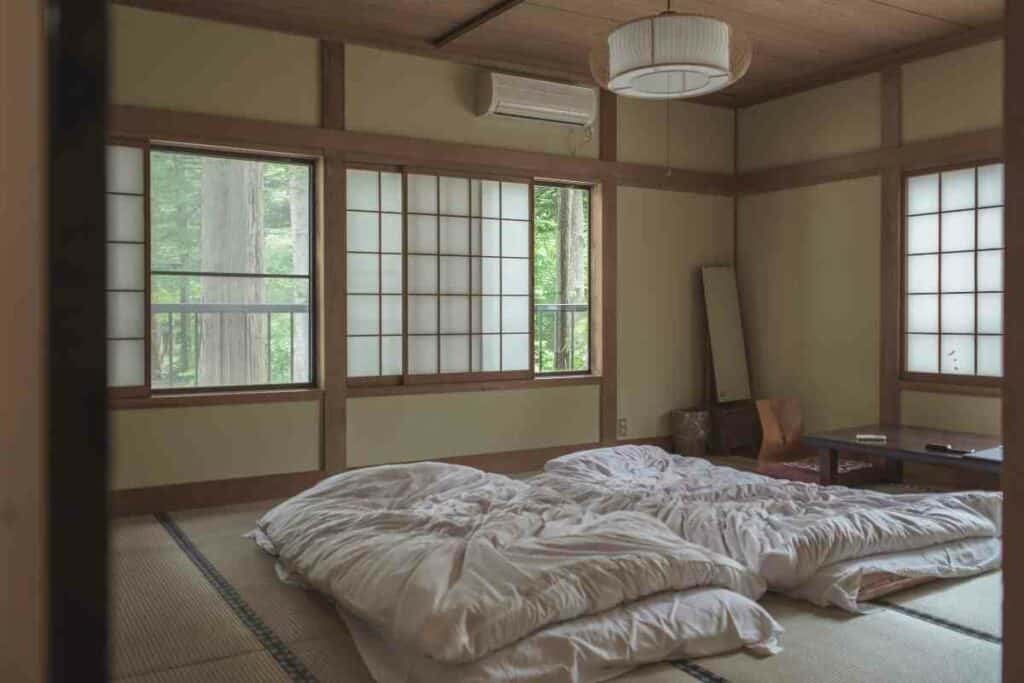
A Japanese futon is a mattress that is placed on the floor and slept on.
There are several parts to a Japanese futon:
- The mattress, or shikibuton
- The sheet that covers the mattress, also called a shiitsu
- The comforter or blanket, or kakebuton, that has a removable cover for easy washing
- A pillow, or makura
- Extra blanket for cold nights, a moufu
How to Set Up a Japanese Futon

If you are staying in Japan, you are expected to lay out your shikibuton each night before bed – even if you are staying in a hotel:
- In addition to the other elements of a futon, you may be given a thin mat with a fabric cover. If you were given this, it goes directly on the floor first.
- If you do not have a fabric-covered mat, the oblong-shaped mattress goes directly on the floor. It should be about the same size as a twin-size mattress, just thinner.
- Spread the shiitsu over the shikibuton. Any leftover fabric should be tucked underneath the mattress to make a tighter fit.
- You may also have to put the kakebuton in the cover yourself as you normally would put a duvet in a cover. The only difference may be the large oval hole on one side. You might be tempted to put that on the side against your body to hide it, but the comforter should be placed with the hole up to the ceiling.
How To Store A Futon
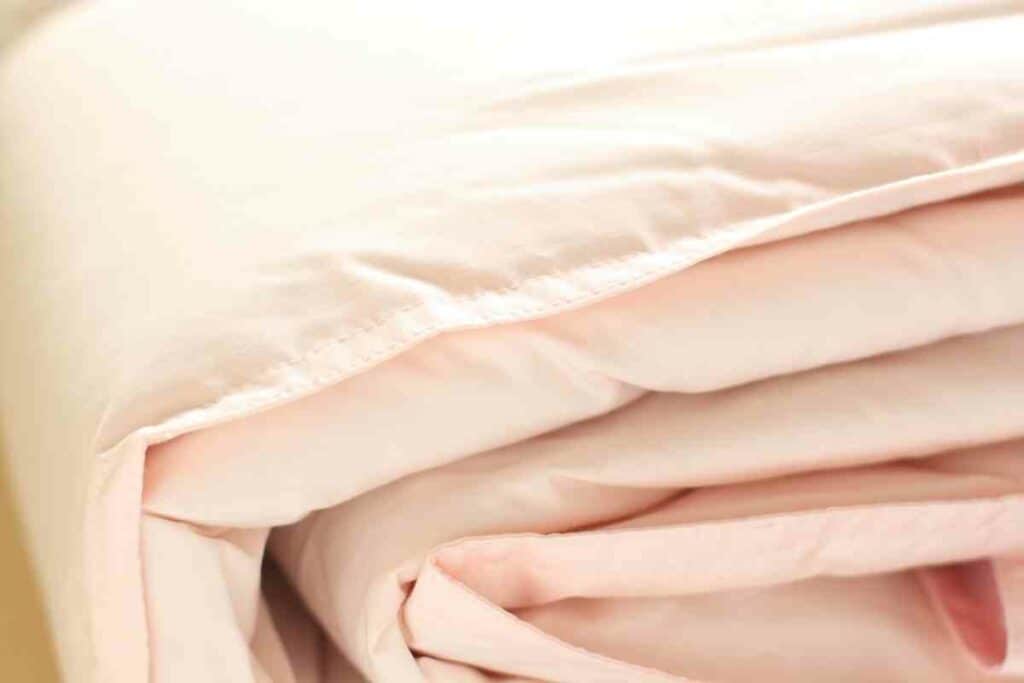
When you wake up, it is proper etiquette to fold or roll your futon and store it for the day so you have more space to enjoy in your room:
- Start by folding the kakebuton, making sure the side that was against you is folded into the inside so it stays clean. and then fold the kakebuton in half again so it is easier to carry to be stored or stacked.
- If you are leaving the shiitsu on your shikibuton, fold the mattress in half with the sheet side facing the inside to keep them clean. Then fold the mattress in half again. If you take the shiitsu off, you can fold the mattress into thirds.
- When everything is folded, place the folded stack in the provided closet, called an oshiire.
If there is no closet, you are to stack everything on the floor in a corner along a wall in the following order from bottom to top:
- shikibuton (mattress) on the bottom
- kakebuton (comforter)
- shiitsu (sheet)
- makura (pillow)
Long Term Storage
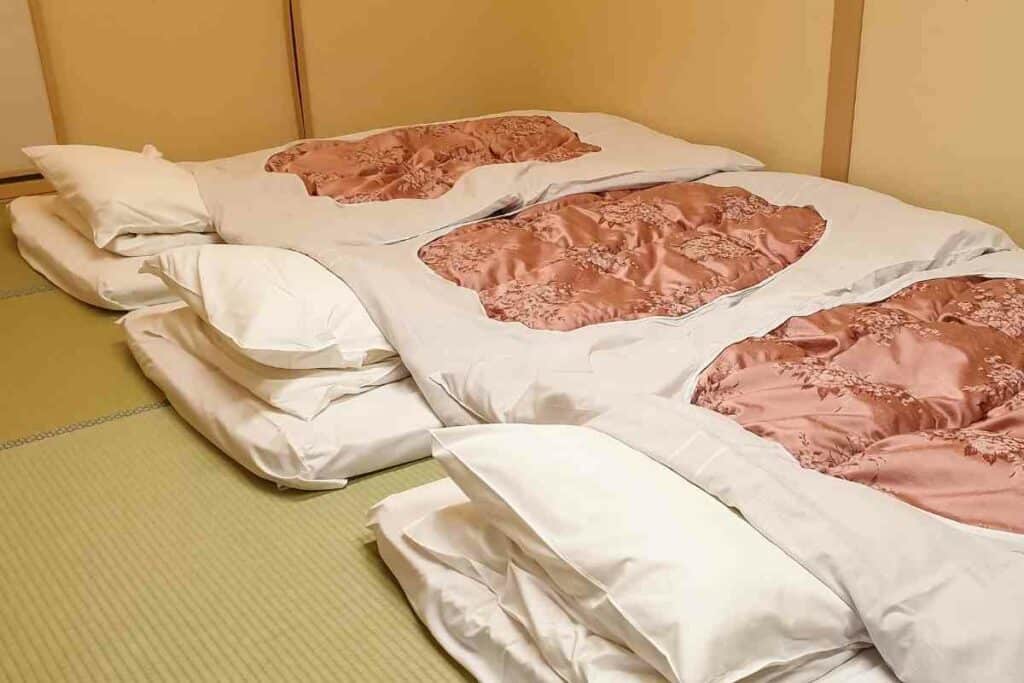
If you’re storing a futon longer than a couple of weeks, here are some tips to keep it in its best condition:
- Let it dry. Futons will absorb moisture, and if it’s sealed with moisture, your futon will grow mold.
- Don’t vacuum pack it. Many people will vacuum pack towels, sheets, and clothes to save space in their closets, but this shouldn’t be applied to a shikibuton. When the futon is compressed, it loses its loftiness and won’t be as comfortable to sleep on after storage. There also shouldn’t be anything stored on top of the futon for the same reason.
- Use fabric-safe insecticide. Insects will make a home for themselves anywhere that’s warm and dry, which makes a futon the perfect place for insects to nest. Futons that are filled with animal products, like down or wool, are even more welcoming to insects. An insecticide will keep these insects away from your shikibuton while it is stored.
Futon History
Elements of the futon originated in a prehistoric time period, but something resembling the current Japanese futon appeared in the Nara period from 710 CE to 794 CE.
The futon, or shikibuton, started as a bottom mattress. It was made from woven rush or straw.
One mattress wasn’t exactly comfortable, and it became people started stacking several of them on top of each other.
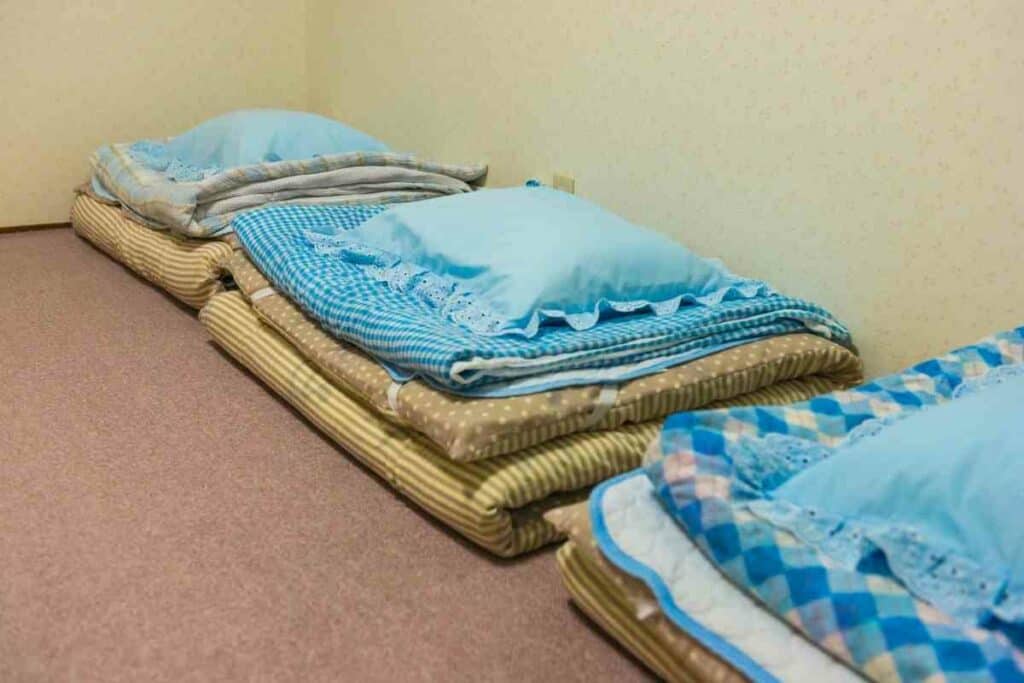
While this design turned into tatami flooring, people in power started the next step of the futon.
People with a high rank would commission a cushion to be made for their mattress. These were made of silk or fur and were much more comfortable than sleeping on a bottom mattress.
Several centuries later, the bedroom was treated as the best room in the home.
It was supposed to be in the best place in the house and have the best view. It was also adorned with artwork.
The bedroom then became popular to start entertaining guests in, since it was the best room in the house.
And then it became polite to pack your shikibuton away when you had company.
Having a futon that can easily be folded and stored made it easy to pack away your bed. That’s not easy to do with a mattress, box spring, and bed frame.
Is Sleeping on a Futon Good for You?
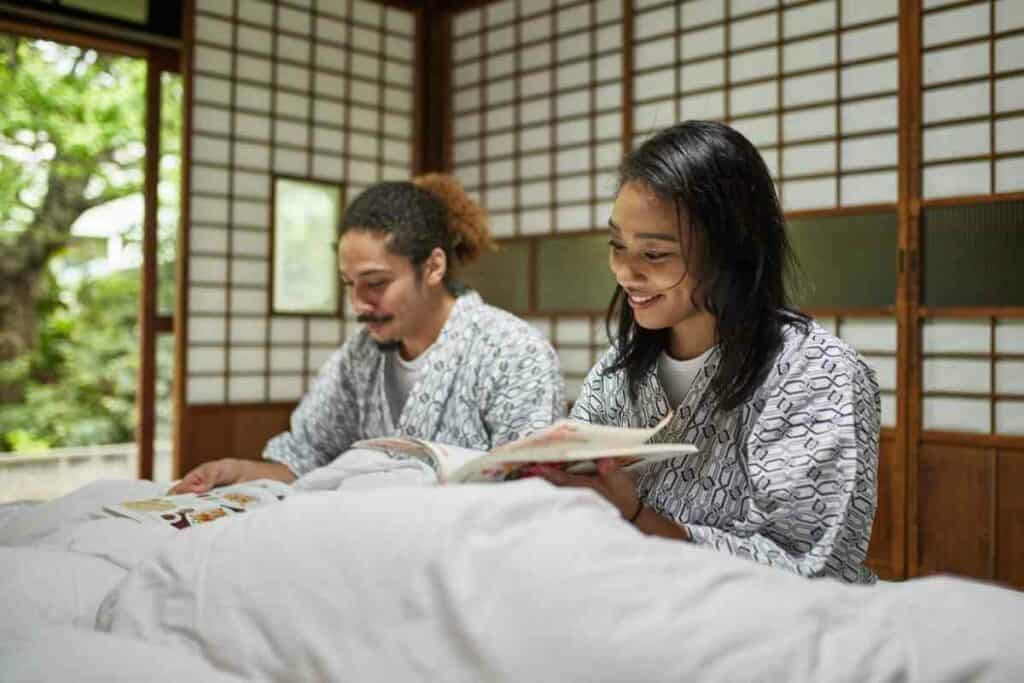
There are so many health advantages to sleeping on a shikibuton, and one of the reasons shikibutons are still around.
Hygienic
Shikibutons are more hygienic, especially when cared for properly.
Storing the mattress during the day keeps dust and other microscopic dust bunnies off your bed.
This is better for your skin, your hair, and your insomnia.
Deep Sleep
You can actually have a deeper sleep when sleeping on a shikibuton compared to a Western mattress.
This is because you have better blood circulation when you are lying flat on a shikibuton.
Not as Hot
Shikibutons don’t retain as much heat as Western mattresses.
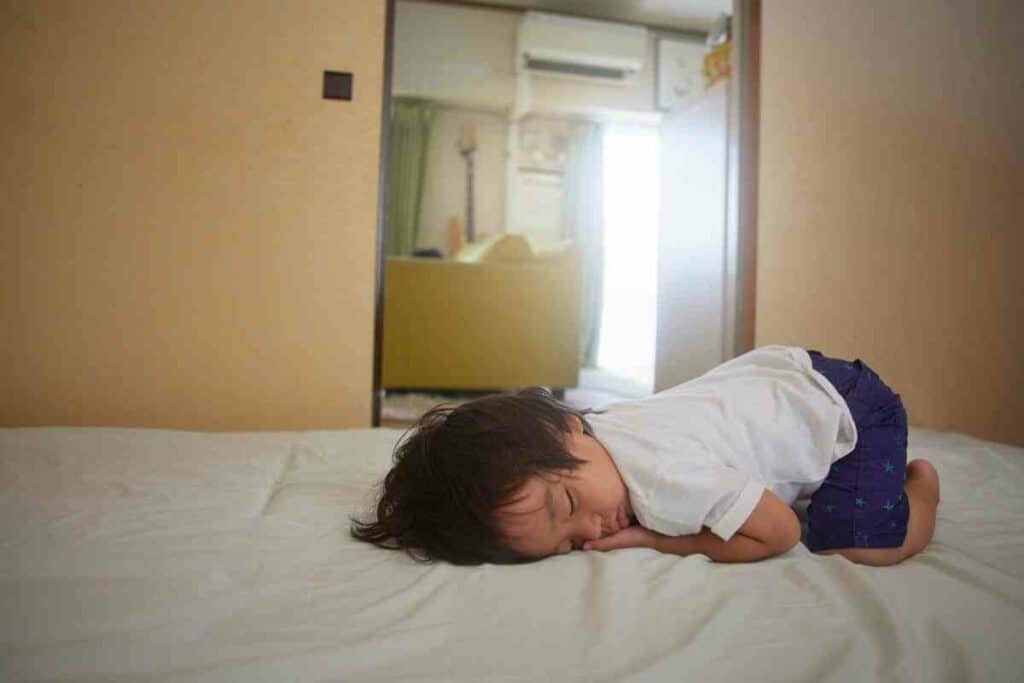
This leaves you cooler at night, and you won’t sweat as much.
If you’re worried about being too cold at night, rest easy knowing that you can buy warmer shikibutons and layer up with additional blankets.
Pain Relief
And one of the biggest advantages of a shikibuton is pain relief.
Lying on a shikibuton aligns your spine naturally, instead of being supported in the wrong way.
Sleeping on a shikibuton also engages your lower back muscles.
When first starting to sleep on a shikibuton, you may experience pain, but it won’t last.
You are experiencing pain because you are waking up after using muscles you don’t normally use, and the muscles are strengthening.
Final Thoughts
So, there you have it. Japanese people still use futons, and for a variety of reasons – some cultural, some practical.
If you’re on the market for a new bed or just curious about how people sleep in other parts of the world, hopefully, this has given you a little insight into the sleeping habits of the Japanese.
Read Next
- Best Japanese Knives Top Picks for Every Kitchen
- Japan’s Bold New Trend: Dressing Like a British Gentleman (or at Least Trying)
- 7 Best Japanese Sunscreen Products You Can Buy Online
- 5 Best Japanese Makeup Brushes for a Flawless Finish
- 7 Benefits Of Tatami Mats You Should Know
- The Best Furoshiki Wrapping Cloths: Inspiration, Ideas & Cloths You Can Buy


